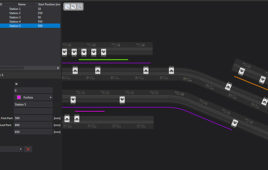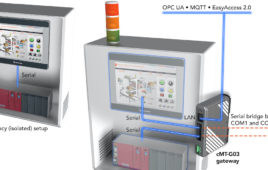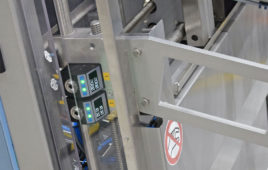Now that the first mobile network operators have rolled out nation-wide LTE Cat M1 and NB-IoT communication networks, device manufacturers are busy developing solutions to meet emerging market demand. Successful solutions will benefit from globally capable smart devices configurable to the best-suited cellular technology and networks and exploit power-optimized device management and communication protocols that simplify deployment, operation, and maintenance.
The Connectivity Landscape
Global cellular communication technologies are evolving and multiplying, and low-power wide-area (LPWA) technologies tailored to the needs of the Internet of Things are no exception. Utilizing hardware optimized for power, coverage, cost, and reliability at the expense of data throughput and latency, cellular LPWA technologies are positioning themselves as strong competitors to proprietary ones used in a variety of predominantly professional and commercial use cases. Because cellular LPWA technologies benefit from guaranteed quality of service, they are likely to expand connectivity to entirely new markets, broadening the reach and impact of the IoT.
Cellular LPWA technologies – LTE-M and NB-IoT– offer several advantages over proprietary ones such as SigFox, LoraWAN, RPMA, and others. They run on licensed portions of the mobile communication spectrum, which guarantees that communications are not crowded out. They are standardized by the 3GPP, simplifying hardware certification across major markets. They run on mobile network infrastructure already available world-wide, often requiring only a minor software upgrade to become operational. This makes cellular LPWA technologies highly reliable, secure, and comparatively easy to deploy and maintain.
While cellular LPWA technologies may offer the most straightforward communication solution for global IoT applications, device manufacturers quickly find themselves confronted with a highly fragmented technological, commercial, and regulatory landscape. Backed by major operators, LTE-M has been rolled out nationwide in the USA and Mexico, among other countries. Asia, including China, has shown a preference for NB-IoT, as has Europe. And we’ve reached a tipping point. According to the GSMA, there are likely to be many more network roll-outs this year, as mobile IoT networks scale up.
The Best Technology for the Job
As LPWA networks roll out around the globe, coverage will continue to be a key factor guiding product designers’ choice of communications technology. LTE-M and NB-IoT each have several distinguishing features that make it the technology of choice for specific applications.
.jpg)
Table 1: LPWA technology comparison. (Image Source: u-blox)
2G: Offering voice support, full handover from one network cell to the next, and latency in the second to millisecond range, yet lacking FOTA (Firmware Updates Over The Air) capability and deep penetration, 2G meets the needs of industries such as fleet management, tracking systems, and utility meters. Its low price tag comes at the cost of relatively low data throughput and an impending phase out of the technology.
LTE-M: Based on LTE technology, LTE-M delivers low latency mobile connectivity with extended reach into basements and support for voice communication as well as higher data transfer rates. This makes LTE-M ideal for a wealth of applications, such as in smart buildings and smart cities, as well as in consumer, connected health, and vehicle and asset tracking.
NB-IoT: Fully geared to M2M communication, NB-IoT makes up for its low data rates and high latency with its penetration deep underground and 10 year plus battery life, making it the technology of choice for stationary power sensitive applications such as utility meters, smart cities and other ultra-low-power applications that will remain asleep most of the time, waking only after long intervals to send small packets of data.
Juxtaposing the availability and the applicability of these three technologies poses a conundrum for device manufacturers seeking to develop an application for regions lacking coverage of the best adapted technology. Should they wait for the technology to roll out before introducing their solution? Or should they, instead, roll out an initial iteration of their product leveraging sub-optimal communication technology to ensure their place on the market?
 (002).jpg)
Figure 1: Markets and Applications. (Image Source: u-blox)
Designers who inject a degree of technological versatility into their products, i.e. the possibility of switching to the optimal technology when it becomes available, will have a competitive advantage over others that lock their customers into a single technology. This becomes even more critical for global applications that are required to operate and update themselves in wildly different environments.
Device Longevity
To succeed in global applications, deployed devices need to be secure, up to date, and versatile. LWM2M, short for Light Weight Machine to Machine, is emerging as the de facto standard for remote device management. Released by the Open Mobile Alliance, LWM2M was designed to remotely and wirelessly manage sensor networks, from carrying out firmware updates, security patches to updating drivers and changing device configurations in bulk and without physical intervention. Optimized for low data rate power constrained devices, it is ideally suited for LTE-M and NB-IoT devices that aim for a 5-10+ year deployment.
Using LWM2M, users can efficiently manage LPWA devices by interacting with Device Management Objects – data structures that hold logically grouped values – stored on the device to carry out standard or customized functions such as: observe, notify, control, execute a command, or trigger an action. Tracking devices mounted on a shared bike can, for instance, be queried to locate lost bikes. Alarm systems can be configured to monitor a home’s doors and windows and to send out a notification when one of them is opened. And devices such as domestic air conditioning units can be switched on and off remotely.
Consider the example of a home security panel. At the time of installation, a specific MNO might provide the best and most affordable rate plan. The flexibility of being able to make the MNO selection at ‘zero hour’ is powerful. The ability to change that decision perpetually in the future without having to change out the device is a game changer.
One World, One Device
Going global greatly increases the degrees of complexity with which product designers are confronted. Not only do they have to contend with an evolving and sometimes fragmented footprint of technologies, they must also effectively address a diversity of mobile network operators and their regional requirements.
The LTE spectrum is highly fragmented across dozens of frequency bands, requiring device makers to manage multiple SKUs around the globe. While this may address network fragmentation from a regional viewpoint, it is impractical as a global solution that requires connectivity everywhere for transmission of collected data, for remote management, and for security-related updates.
This challenge is met with the development of truly global cellular modules under the vision of: one world, one module. These modules enable product developers to defer configuration to zero hour, enable or disable LTE bands, add new MNO profiles without changing the host software, select the Radio Access Technology, and continuously update the device using FOTA / LWM2M. In the best case, they come pre-certified for a whole host of MNOs within a single software version.
Efficient Communication
3G and 4G LTE communications have been tailored to transfer more data at higher data rates. The size of the overhead used to deliver such content was mere peanuts compared to the elephant-sized payload itself, which could be anything from a video stream, a voice conversation, or a website. But this calculus shifts with LPWA applications, in which the payload is often measured in kilobytes and might even be smaller than the overhead of 3G and 4G messages. Because data transfer is the main power drain in LPWA devices, efficient communication protocols are key to extending battery life.
MQTT (over TCP) and CoAP (over UDP)
Two application layer protocols are becoming dominant in LPWA applications: Message Queuing Telemetry Transport (MQTT), which works on top of the TCP/IP protocol, and the Constrained Application Protocol (CoAP), which works on top of the UDP/IP protocol. As we will see, the choice of application layer protocol is largely dictated by the choice of transport layer protocol.
The Transmission Control Protocol (TCP) offers a degree of control by ensuring that connections to the receiver are successfully established, that data is transferred reliably and reassembled in the right order, that errors are caught and corrected, and that the connection is shut down gracefully. This increased reliability, a prerequisite for many applications, comes at the cost of a relatively high volume of data exchanged between the client and the server (when compared to UDP), and a consequently high power consumption.
The User Datagram Protocol (UDP), on the other hand, is both connectionless and stateless. That means data packets are simply sent to the receiver without first establishing a connection and without ensuring that the data is successfully received. There is no guarantee that all the packets are delivered, no way for missed packets to be recovered, and no way to detect duplicates. In exchange, however, UDP reduces the data overhead to a minimum, with subsequent savings in data transfer and power expenditure.
Non-IP Data Delivery
To support the development of the Internet of Things and the low data volumes used by many of its applications, 3GPP Release 13 introduced as part of the CIoT EPS optimizations several new methods to transfer data from a user device to an application server and back. One of them is Non-IP Data Delivery (NIDD), which allows small amounts of data to be transferred directly via the control plane using secure server APIs instead of IP internet protocol. Because data is sent directly on the signaling radio bearer, this dispenses with the need to set up a data radio bearer, saving overhead. As a result, this approach is ideal for typical NB-IoT applications that infrequently transmit small data packets.
Ultimately, the choice of communication protocol has to be made on a case by case basis in concertation with the mobile network operator. The main criteria are:
- Availability of network technologies
- Size and frequency of data deliveries
- Degree of reliability required for data deliveries
- Targeted power consumption
Summary: A winning solution
Developing LPWAN solutions that are successful in the long term requires flexibility and the ability to meet changing reliability and security needs with an optimal choice of communication protocols and power requirements. With the rapid technological evolution that is currently underway, the ability to select the optimal technology and operator at any given time can help ensure high performance at the optimal cost. Globally certified solutions with seamless roaming are particularly relevant to applications such as asset trackers, devices that, in today’s world, travel as global citizens. Remote device management via the LWM2M protocol can offer efficient over-the-air communication between the device and the server to enable wide-ranging use cases, as well as to perform vital security and firmware updates. And by exploiting the recent 3GPP cellular IoT optimizations, this can all be done while preserving battery life. The result is a winning solution that can endure the test of time.
Filed Under: M2M (machine to machine)




